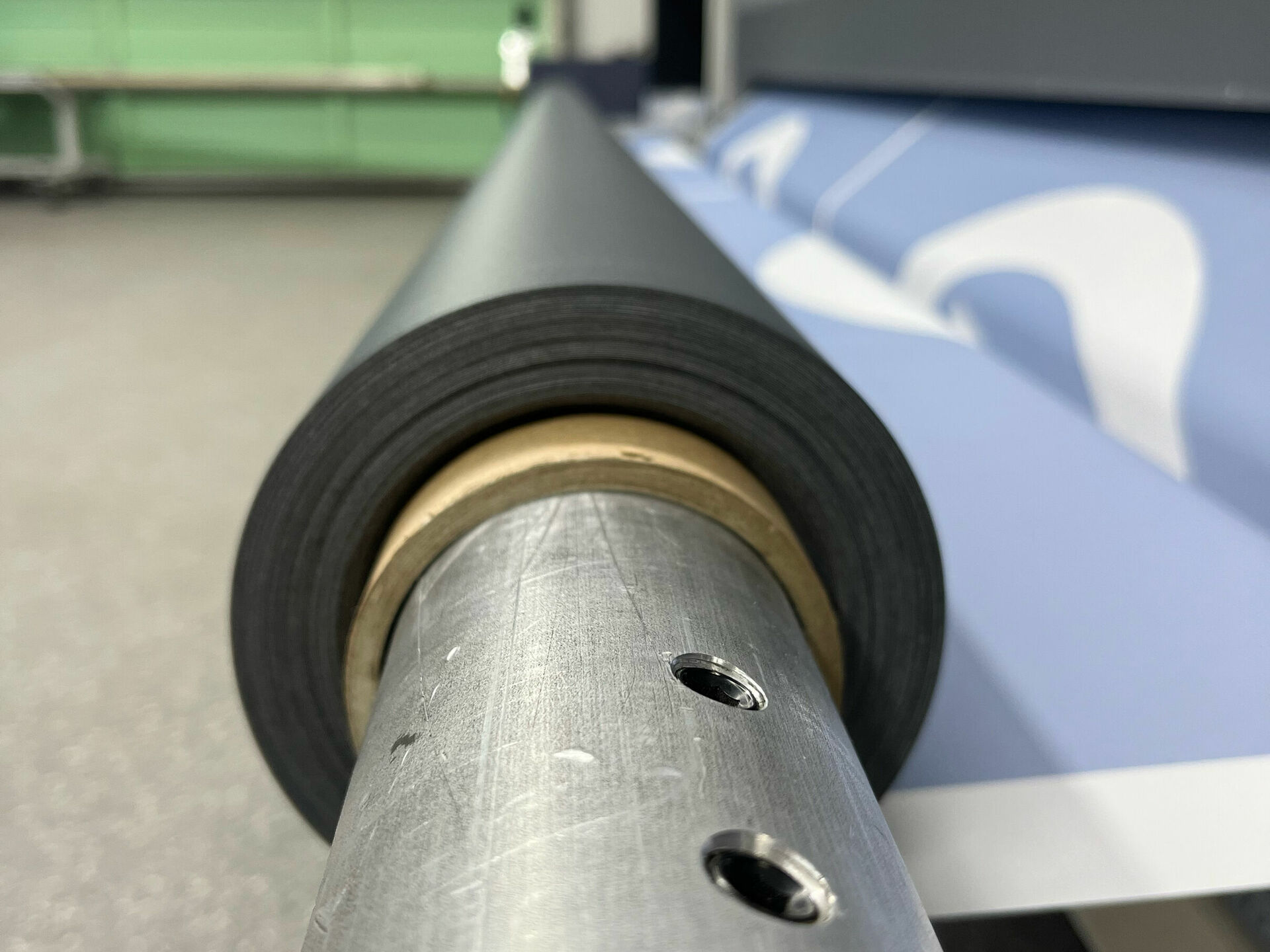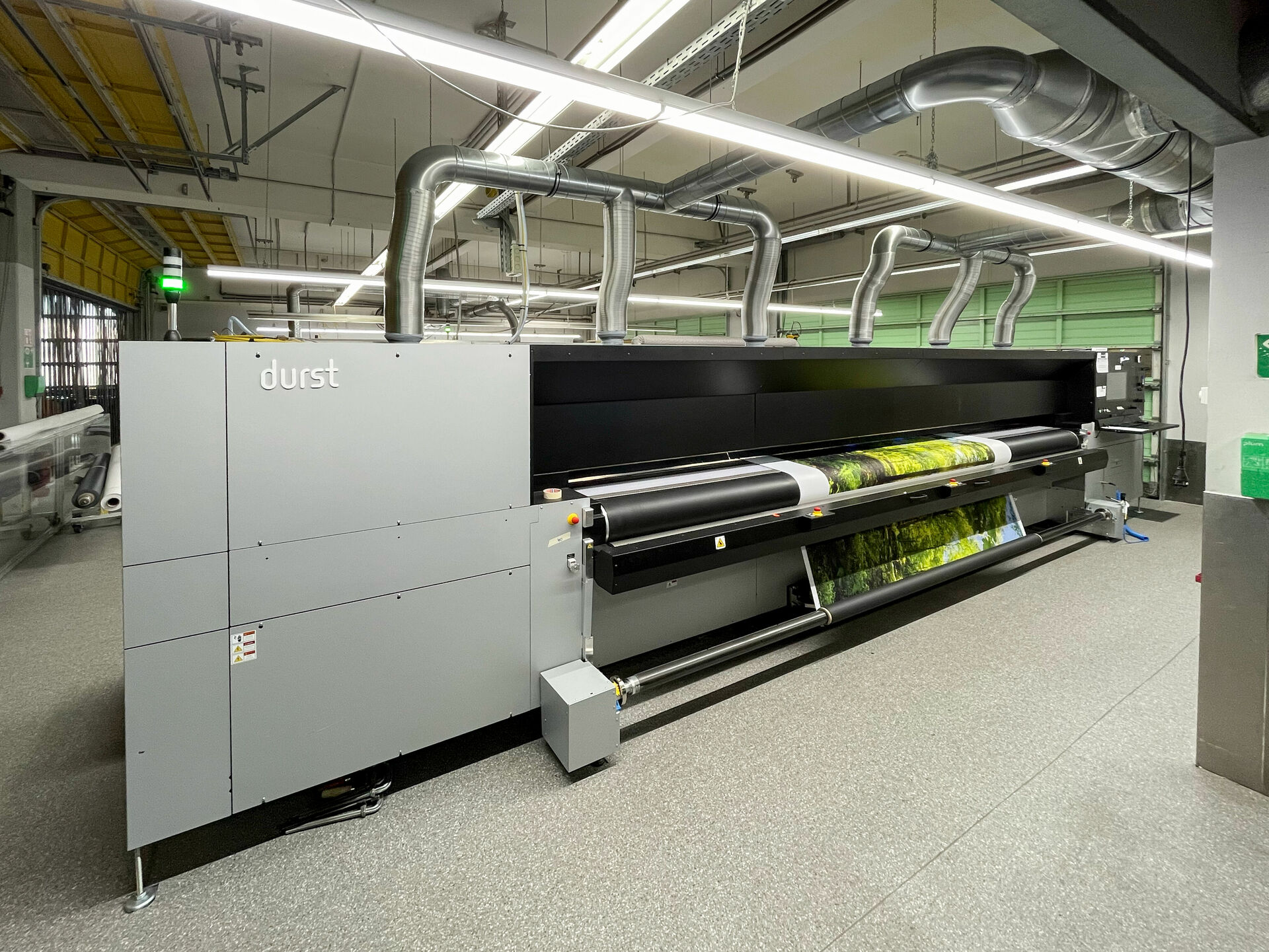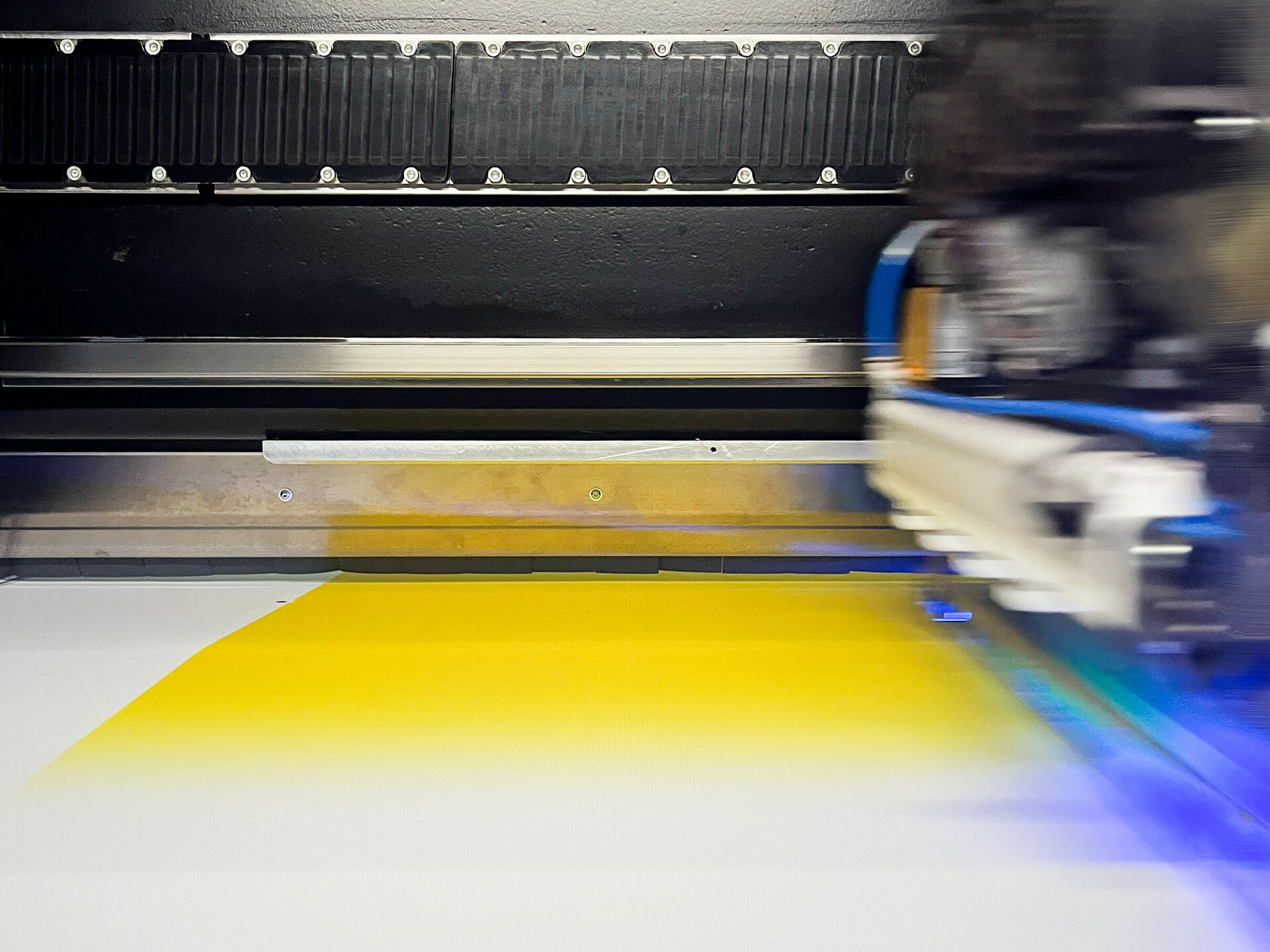Looking for a tricky word for your next game of hangman? How about “dye-sublimation printing principle”? Here’s how this printing process works: a motif is applied to a textile, which is then passed through a large rotating heat press. The heat causes the ink to turn into a gas (or sublimate) which bonds it to the fibers of the textile, resulting in a permanent print. In this article, we’ll dive into the details and explain the three major advantages of this method for trade fairs, events, and interior design.
- In this process, the motif is printed directly onto the textile. When the print comes out of the machine, it is much paler than the original produced later. This is because the ink that has already been applied has not yet hardened properly and penetrated the fibers - in contrast to UV printing, where the ink is only applied to the surface of the material, almost like a flexible varnish. For the subsequent processing steps, the print is rolled up without the applied ink smudging. This is because the ink is already dry on the surface.
- Next, the rolled-up print is clamped in an extra machine, the calender. It looks like an oversized hot ironer. In the so-called calendering process, the material runs over many deflection rollers. Some of these are heated and ensure that the color particles of the ink burst open, become gaseous and thus penetrate the fabric of the material.
- Only now does the full brilliance of the color come to light, allowing the motif to be reproduced precisely. After the calendering process, the ink is completely hardened and fixed.
-
Thermal transfer sublimation printing works like an iron-on image. The motif is first printed in reverse on transfer paper, which is then pressed onto the textile in the calender.
-
Next, the transfer paper and the textile are brought together in the calender so that the motif is transferred to the material. Here too, the calendering process ensures that the color particles of the ink burst open and penetrate the fabric of the material. And then the full brilliance of the color is revealed.
What works on a T-shirt also scales up beautifully for large-format digital prints.
Whether you need a banner for events or an acoustic panel to enhance sound quality, the Procedes Group employs the latest in dye-sublimation technology.
Our world-class machines can handle material widths of up to 16 feet, and the motifs are then set in place using the calendering process.
This method, whether direct or transfer printing, is cost-effective and ready for immediate use.
- Dye-sublimation printing delivers outstanding print quality with precise, long-lasting colors. White breakage, or the appearance of small white cracks when folded or creased, does not occur with this process.
- Lower transportation costs are a significant benefit. Because the material can be folded easily, it has a smaller packaging volume, reducing shipping costs and simplifying logistics.
- The prints are odorless, making them suitable for immediate use indoors, whether for interior design or trade fairs and events. There’s no need for airing out.
The standard CMYK color system consists of cyan, magenta, yellow, and key (black). In sublimation printing, we enhance this with light cyan and light magenta. These additional colors provide better gradients and smoother skin tones, resulting in more harmonious prints.
We also use water-based, solvent-free dispersion inks to ensure our printing is as eco-friendly and sustainable as possible, in line with our commitment to green printing.
As you can see, dye-sublimation printing is no mystery to us and offers numerous advantages. It’s no surprise that this method inspired the name of our Sublimate magazine.



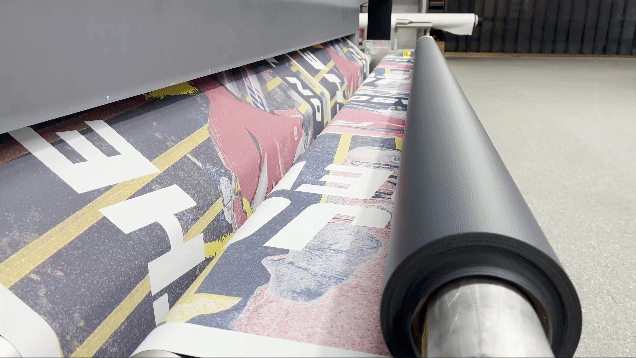
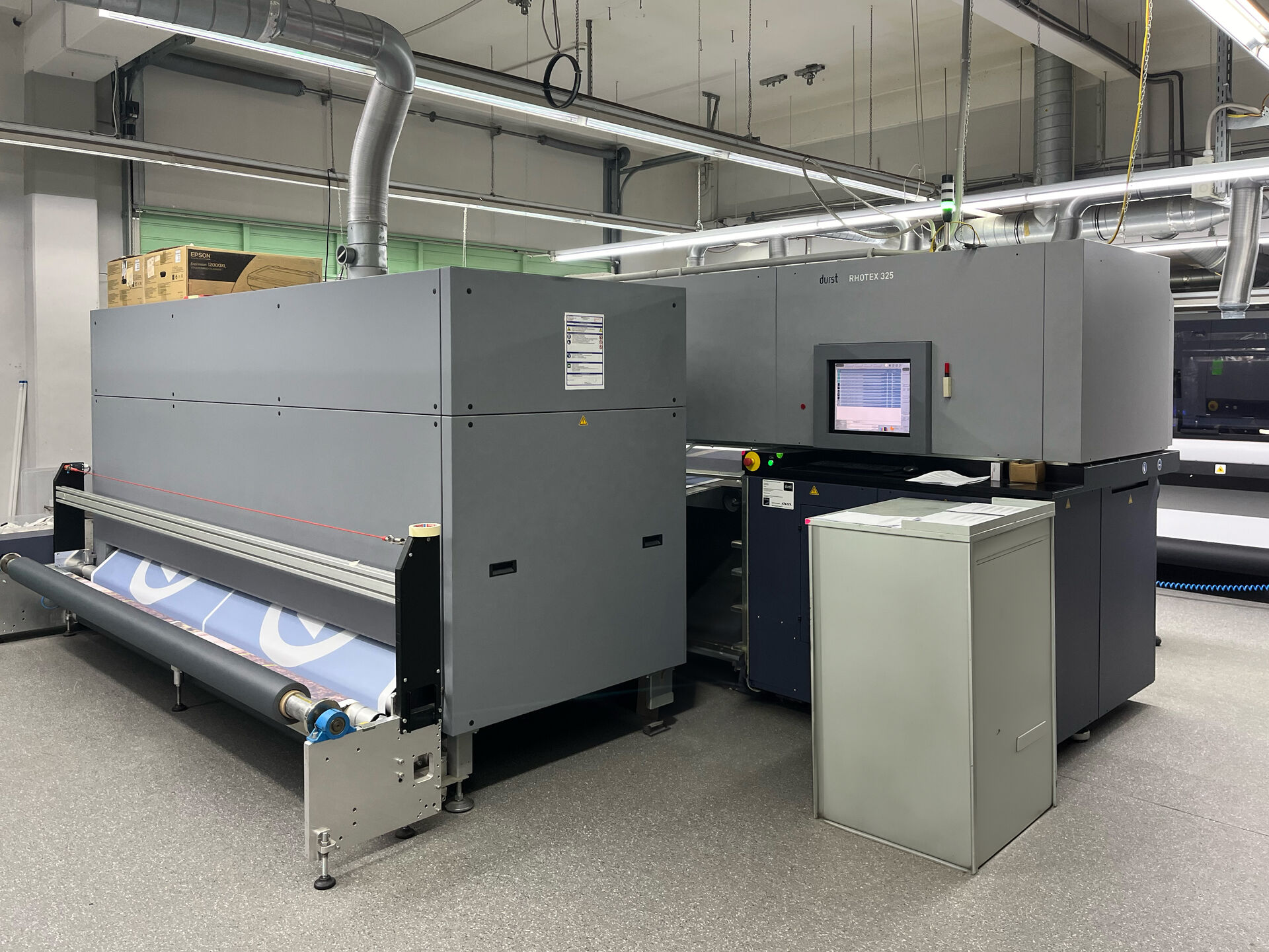

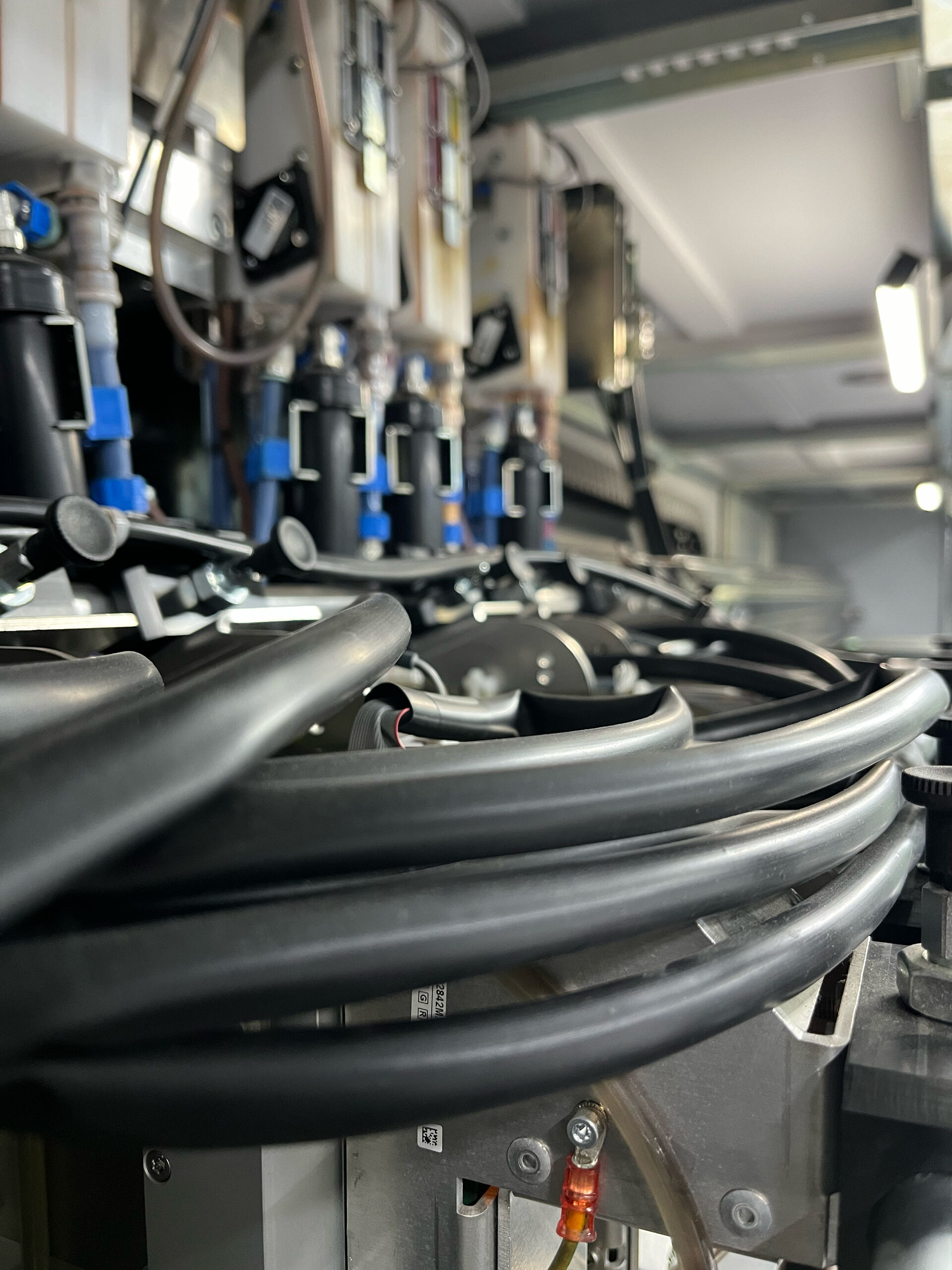
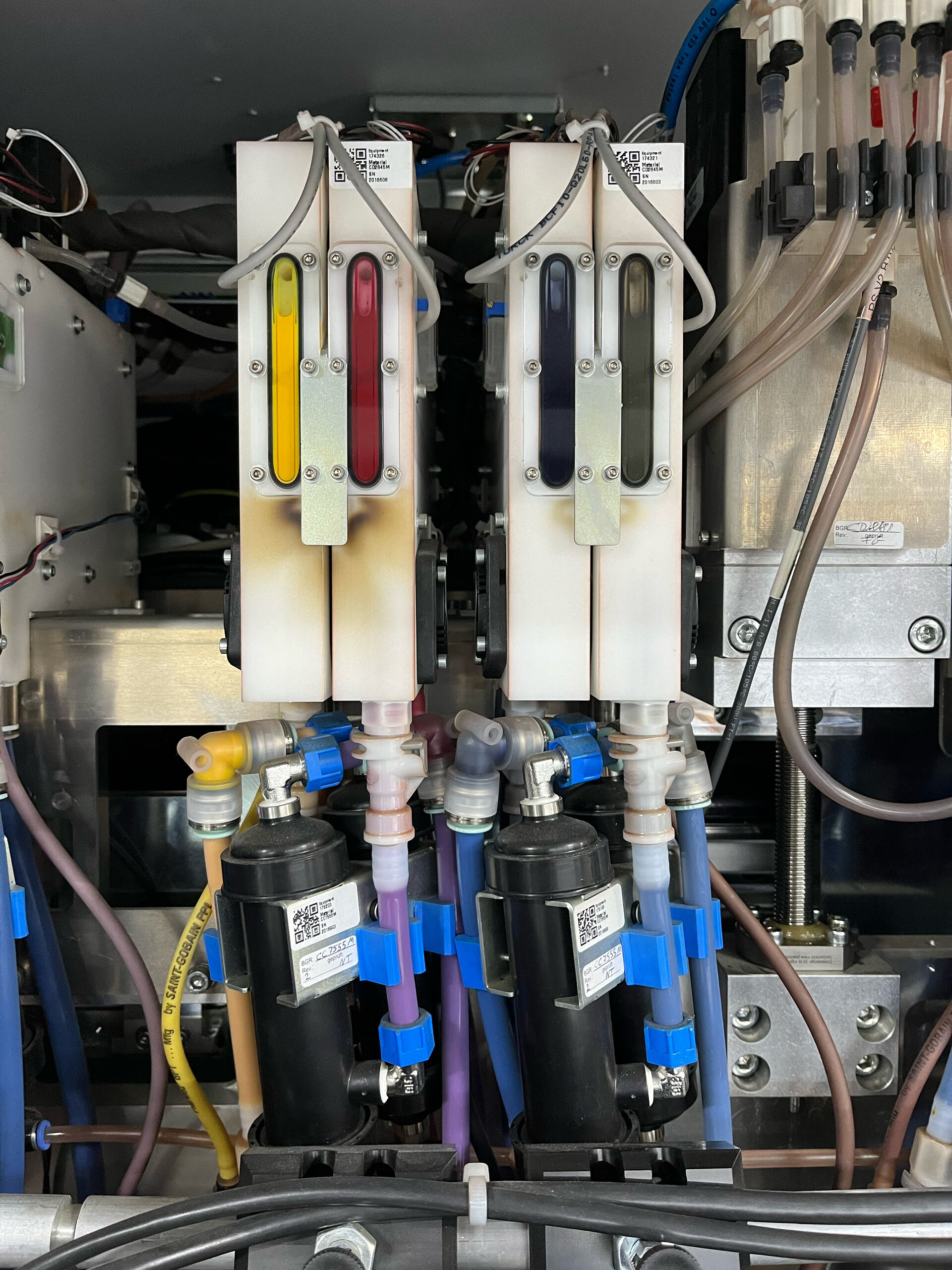

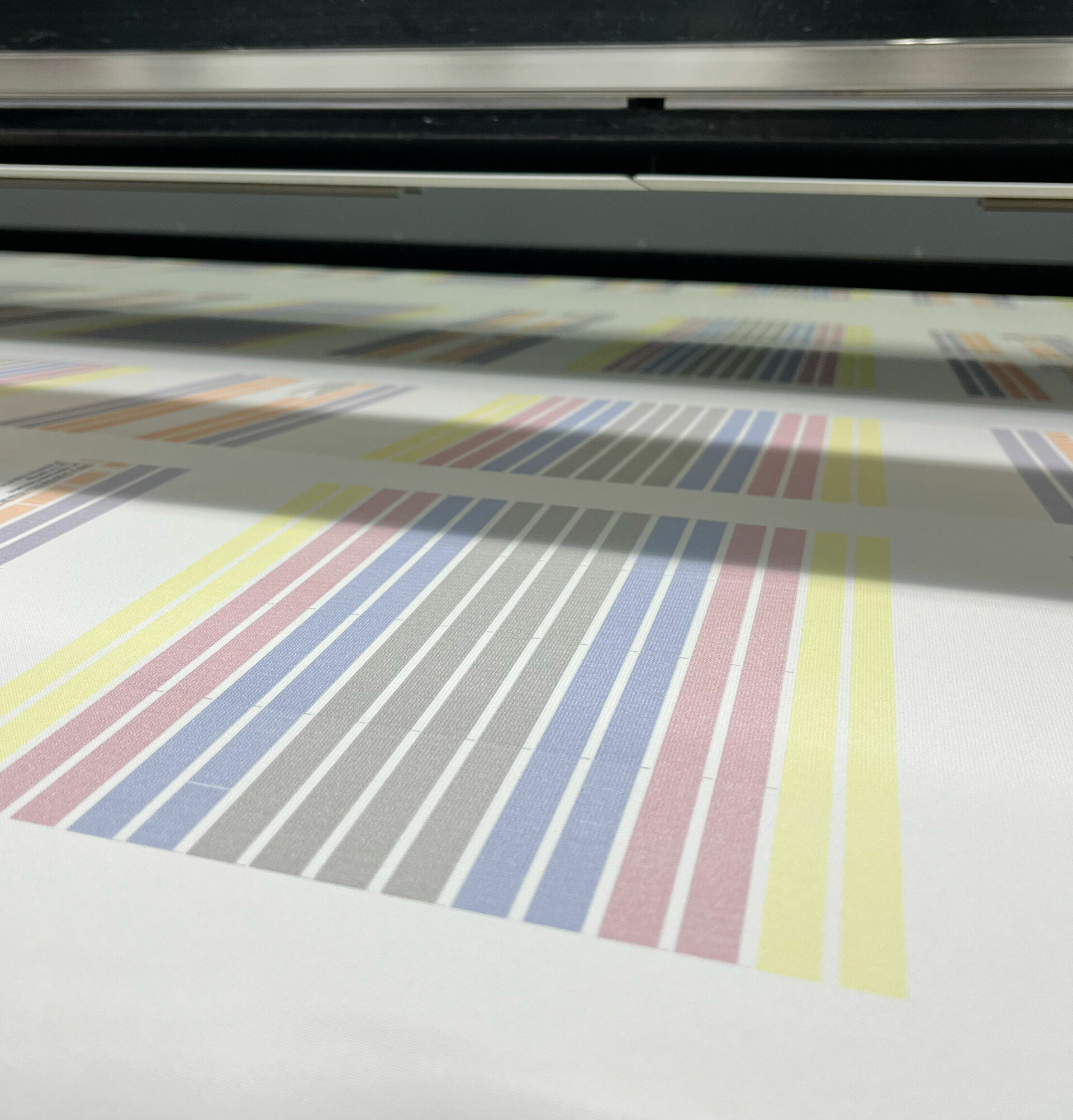
![[Translate to English:] Round textile sculptures in white hang from the ceiling.](/fileadmin/_processed_/f/7/csm_cta-procedes_b2c2ad64de.jpg)

